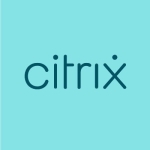What is our primary use case?
We use it for interacting with other employees. They'll have TeamViewer, but they're working from home in another state. We link up our computers and, that way, it's almost like we're sitting next to each other. We can see what the other is doing on his computer.
We do use the technical support mode sometimes, which is the same thing as collaboration. You just log in to somebody's computer and fix that computer remotely.
How has it helped my organization?
It's smoother. It's faster. It stays on. It seems to have a really good connection and it's consistent.
Once we got it for the company, the IT manager deployed it and started using it for technical support. He doesn't use it a whole lot, but when he does need it, it really helps him. He can get in there and see what problem another computer is having.
What is most valuable?
The best feature is the remote access and being able to control another person's computer when you're showing them something, or teaching them how to do something during training, or fixing a problem they're having. Also, if I'm at home or even on the other side of the country like I am right now, I can log in to my computer at work.
On slow internet connections, TeamViewer works much better than other products. It seems to deal with slow internet connections better. If we are in a remote location and we want to access our computers at work, or a server, we can just log in to TeamViewer and it seems to connect.
There's a lot more you can do with it as far as collaboration and team co-operation go. You can get a lot of people on it. We're not utilizing it for that. For example, if the boss wants to hold a meeting, and have everybody join the meeting, he can do so and have different people do presentations. They can do their presentations and interact on one computer. If the boss is showing something and he says, "Well, take over and you show me what you think," that person can take over the cursor and start running it as if he's sitting right there in the meeting. I don't see other products doing that very well.
With the other products that we're currently using, somebody has to say, "Well, let me share my screen and then they have to start sharing their screen and they have to turn it over to somebody else. Everybody has to load the program and get on the same page on their own computers, rather than just switching the control of the presentation to somebody, wherever that person happens to. With TeamViewer, they can take over the presentation right on the same computer that the presenter was using and give their presentation without having to switch screens. I love that part.
For how long have I used the solution?
I've been using TeamViewer for a couple of years, but we just got the licenses in June.
What do I think about the scalability of the solution?
The scalability has great potential. We could be using this for a lot more people in our company.
Our company has free products in use, like Microsoft Teams. The problem with Teams is that it's not as clear. It locks up and sometimes just doesn't work as well. But it's free, and everybody's using it, so it's hard to get people to move to something that's not free.
Although TeamViewer is a little more dependable and works much better, the cost is high. I can have a meeting online and have 35 people on it, as long as they have installed TeamViewer or log in to the website. They can all get on and they don't have to pay. But since everybody is using another product, and they've been using it for years, it's hard to scale up and get them convinced to use something different.
How are customer service and technical support?
I've used the vendor's technical support a few times. They're responsive and they took care of my concerns. They showed me how to do things correctly. They were really good, easy to work with.
How was the initial setup?
The setup is fairly easy. The basic connection is easy. When I started using the different services, I didn't know how to go in and start up a meeting. It seems to have a lot of features that have a little bit of a learning curve. I don't have time to learn all those features, so I just use the basic stuff.
On average, deployment takes 30 minutes.
I deployed it myself, as did my co-worker who is also a developer.
What was our ROI?
We haven't seen ROI. We're using it strictly for IT and technical, internal use.
I do use it a lot for remote accessing of my computer at work. I don't have to do anything, such as turn my work computer on. It just logs right in and I can start using it. I can also log in to other peoples' computers. All you have to do is hit a button and say, "Yes, allow me in." It makes it so simple to connect. It's worth the money, even though it's a little bit expensive.
What's my experience with pricing, setup cost, and licensing?
It does what I need it to do but I think it's expensive. It wasn't easy for me to get approval from the company to get it. Not a whole lot of people in our company use it, but the five or six of us who do use it get a lot out of it.
It's costing us about $700 a year, per license. For the company it was $2,000, and that was on a deal. I think it would have been $2,200 or $2,300.
I also got it for a friend who was working remotely. At the end of his year's subscription to TeamViewer, he wasn't using it much anymore. He was using something else. He called them to tell them that he did not want to continue with it for another year, but they said, "No, you didn't give us the 30-day buffer at the end of the year which is required to cancel for the coming year, so there's no way you can cancel now." They wouldn't let him out of the contract. He didn't read the fine print. We then read the fine print it did say that you have to give that number of days' prior notice before you cancel at the end of the year. If you don't give them that prior notice, you're stuck. I didn't like that.
I've looked at other companies that provide the same type of thing and their pricing is about the same.
Which other solutions did I evaluate?
I tried using WebEx and another product as well. They didn't work as smoothly as TeamViewer. We've tried using Microsoft Teams. Using that, you can take over and control the other person's cursor, but it's really cumbersome. When I use TeamViewer and get it up and going, it's almost like I'm just sitting in front of that computer. Aside from the couple of icons and menus that are off to the side, you can't even tell that you're not using the actual computer.
WebEx is great for doing meetings. TeamViewer may be doing great for doing that but I haven't really used it for that.
TeamViewer is much better for doing remote access than WebEx. For the stuff that I use every day, TeamViewer works better than other products, especially when I want to take over control of another computer. The other products that I've tried are not nearly as good when I do that. TeamViewer is the best.
What other advice do I have?
The biggest thing I've learned from using TeamViewer is that you shouldn't spend a whole lot of time trying to find other products to save a little bit of money, when you already have a product that you know is working great. Don't waste your time. Get the product you know is working well, one you have confidence in and a little bit of experience in. Don't try to cut corners. I spend a lot of time trying to find other products because the company doesn't want to spend a few thousand dollars for just me and one other person, but when the IT person got on, then he was able to get them to use it.
In my opinion, it's the best remote access product on the market. The service is great. The product is great.
Which deployment model are you using for this solution?
On-premises
Disclosure: PeerSpot contacted the reviewer to collect the review and to validate authenticity. The reviewer was referred by the vendor, but the review is not subject to editing or approval by the vendor.















